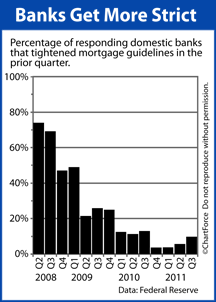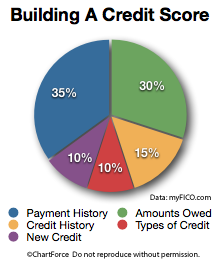
Foreclosed homes are a hot market throughout OH — and supplies are ramping up.
According to foreclosure-tracking firm RealtyTrac, October’s foreclosure filings rose 7 percent to 231,000 filings nationwide.
A “foreclosure filing” is any one of the following foreclosure-related events : A default notice on a home; a scheduled auction for a home; or, a bank repossession of a home. Because of this definition, a single home can account for up to 3 foreclosure filings — one from each category.
Because of this, we may glean more relevant insight into the foreclosure market by separating RealtyTrac’s foreclosure report into “event types”.
- Default Notices : Up 10% from September 2011; Down 31% from October 2010.
- Scheduled Auctions : Up 8% from September 2011; Down 38% from October 2010.
- Bank Repossessions : Up 4% from September 2011; Down 27% from October 2010.
These breakdowns suggest that, although improved as compared to last year, the foreclosure market is growing. At least, it’s growing in some parts of the country. We can’t forget that — like everything real estate — foreclosures are a local phenomenon.
In October, just 4 states accounted for more than half of the country’s foreclosure filings. Those four states — California, Florida, Michigan and Illinois — represent just 26% of the U.S. population.
Even on a per household basis, the figures remain disproportionate :
- Top 10 Foreclosure States : 1 foreclosure per 341 households, on average
- Bottom 10 Foreclosure States : 1 foreclosure per 7,434 households, on average
The nationwide foreclosure rate was 1 foreclosure per 563 households.
As a Columbus home buyer, foreclosures are worth watching. They account for 18% of home resales nationwide and, in some markets, can be bought at steep discounts versus a comparable “non-distressed” home. That is part of their appeal, in fact.
But just because foreclosed properties can be a “deal”, it doesn’t mean you should rush to buy one. Buying a foreclosed home from a bank is different from buying a non-foreclosed home from a “person”. The contracts and negotiation process are different, and foreclosed homes are sometimes sold as-is.
“As-is” means “this home may have defects”.
Therefore, if you plan to buy a foreclosed home, talk with a real estate professional first. You can learn a lot about the housing market online, but with respect to writing an offer on a property, you’ll want an experienced agent on your side.

 With Halloween behind us, retailers are in the Holiday Spirit. Businesses know that consumers spent a median
With Halloween behind us, retailers are in the Holiday Spirit. Businesses know that consumers spent a median 